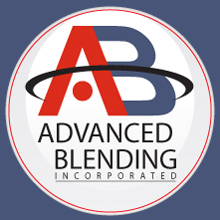MetFloc Process Chemicals for Heavy Metal Removal from Wastewater
The MetFloc Process uses a line of six chemicals for the real-time treatment of metal-laden waste water. The combination of MetFloc chemicals used depends on the profile and complexity of waste solution to be treated. A minimum of one and a maximum of four MetFloc chemicals can be used in any one-treatment cycle. The prescribed dosage will depend on treatability studies conducted on the wastewater.
MetFloc HM11 Co-precipitant, Pre-treatment Solution
| Description | Co-precipitant / pre-treatment solution for removing all heavy metals from waste solutions in ONE pH treatment cycle. Effective for both acidic and alkaline waste solutions. Effective even in the presence of interfering agents (e.g. chelants or complexing agents). Eliminates carry-over fine flocs. Produces clear water. |
| Properties | Appearance: Greenish liquid solution Boiling point: 280 F |
| Handling & storage | Always mix before using. Store in cool, dry place. If frozen, warm then remix to uniform solution. Storage in plastic or epoxy-lined vessels is recommended. Do not use any metal-lined materials in feed of storage systems. Materials for storage and dosing product should be corrosion resistant. |
| Safety | MSDS available on request. |
MetFloc HM12 Co-precipitant, Pre-treatment Solution
| Description | Co-precipitant / pre-treatment used for removing all heavy metals from waste solutions. Effective for both acidic and alkaline waste solutions. |
| Properties | Appearance:
Milky white liquid solution Specific gravity: 1.18 - 1.94 pH range: 11.5 - 13.5 Boiling point: 217° |
| Handling & storage | Always mix before using. Store in cool, dry place. If frozen, warm then remix to uniform solution. Storage in plastic or epoxy-lined vessels is recommended. Do not use any metal-lined materials in feed of storage systems. Materials for storage and dosing of product should be corrosion resistant. |
| Safety | MSDS available or request. |
MetFloc HM13 Cationic Emulsion
| Description | Cationic emulsion. A a high molecular weight, highly charged cationic flocculant used effectively as a sludge conditioning agent in liquid/solids separation processes. It is normally used after the waste solutions have been co-precipitated / pre-treated with MetFloc HM11, TA11, HM12 or HM17C. |
| Properties | Appearance:
Milky white liquid solution Ionic nature: Highly cationic Specific gravity: 1.18 pH range: 9.5 - 10.5 Viscosity: 500 - 1200 cps Boiling point: 260F |
| Principal Uses | As highly charged cationic flocculant or coagulant aid. Successfully applied in liquid/solids separation systems such as clarification, thickening, flotation and dewatering. Can be used alone or in combination with MetFloc HM14. It is normally fed to a treatment system after pre-treatment with MetFloc HM11, TA11, HM12 or HM7C to promote larger flocs, faster settling and denser sludge blankets with negligible pin flocs and carry-over in the effluent. |
| Handling & storage | Store in cool, dry place. If frozen, warm then remix to uniform solution. Storage in plastic or epoxy-lined vessels is recommended. |
| Safety | MSDS available or request. |
MetFloc HM14 Anionic Emulsion
| Description | A high molecular weight, highly charged anionic flocculant used effectively as a sludge conditioning agent in liquid/solids separation processes. It is normally used after the waste solutions have been pre-treated with MetFloc HM11 and/or TA11, MetFloc HM12 and/or HM17C. |
| Properties | Appearance:
Hazy white solution Ionic nature: Highly anionic Specific gravity: 1.12 pH range: 9.5 - 10.5 Viscosity: 400 - 1000 cps Boiling point: 340° |
| Principal Uses | As a highly charged anionic flocculant or coagulant aid. Successfully applied in liquid/solids separation systems such as clarification, thickening, flotation and dewatering. Can be used alone or in combination with MetFloc #3. It is normally fed to a treatment system after pre-treatment with MetFloc #1, TA11, HM12 or HM17C to promote larger flocs, faster settling and denser sludge blankets with negligible pin flocs and carry-over in the effluent. |
| Handling & storage | Store in cool, dry place. If frozen, warm then remix to uniform solution. Storage in plastic or epoxy-lined vessels is recommended. For storage tanks and feed lines, use PVC or reinforced Tygon tubing. |
| Safety | MSDS available or request. |
MetFloc HM17C Meta-cyanide Co-precipitant Solution
| Description | A co-precipitant used for removing all meta-cyanide complexed metals (e.g. Zn, Cd, Cu, Fe, etc.) from waste solutions in ONE pH treatment cycle. Effective for both acidic and alkaline waste solutions. Eliminates carry-over fine flocs. Produces clear water. |
| Properties | Appearance:
Milky white solution Specific gravity: 1.21 - 1.96 pH range: 11.5 - 13.5 Viscosity: 400 - 1000 cps Boiling point: 217F |
| Handling & storage | Store in cool, dry place. If frozen, warm then remix to uniform solution. Storage in plastic or epoxy-lined vessels is recommended. Do not use any metal-lined materials in feed of storage systems. Materials for storage and dosing of product should be corrosion resistant. |
| Safety | MSDS available or request. |
MetFloc TA11 Co-precipitant / Pre-treatment Solution
| Description | A specialty co-precipitant / pre-treatment formulation effective for treating metal-laden waste solutions high in Biochemical Oxygen Demands (BODs) and Chemical Oxygen Demands (CODs). Heavy metals are also precipitated out of solution. The product is effective for both acidic and alkaline waste solutions. Eliminates carry-over fine flocs. Produces clear water. |
| Properties | Appearance:
Brownish solution Specific gravity: 1.93 - 1.97 pH range: 1.2 - 2.8 Viscosity: 400 - 1000 cps Boiling point: 300F |
| Handling & storage | Stored at temperatures between 55 - 95F. If it freezes, thaw completely and mix thoroughly prior to use. Storage in plastic or epoxy-lined vessels is recommended. Do not use any metal-lined materials in feed of storage systems. Cross-linked polyethylene, PVC are the preferred construction materials for bulk tanks. Vitron or Teflon are the best choices for pump heads. For feed lines, use PVC or reinforced Tygon tubing. |
| Safety | MSDS available or request. |





